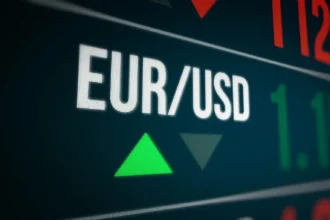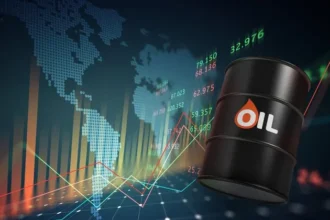Gold prices have recently retreated from their record highs as the U.S. government announced temporary tariff exemptions on certain electronic goods imported from China. This development has improved risk sentiment in the markets, leading to a modest pullback in gold prices. However, underlying factors such as strong central bank demand and increased ETF inflows continue to support a bullish long-term outlook for gold.
Gold Prices Retreat Amid Tariff Exemptions
On Monday, spot gold fell 0.3% to $3,225.79 per ounce, while June futures dipped 0.1% to $3,240.87 per ounce. This pullback followed the U.S. administration’s decision to temporarily exempt smartphones and computers from steep tariffs on Chinese imports, easing immediate trade tensions and boosting investor risk appetite.
Despite this, gold prices remain elevated, trading above $3,200 per ounce, as market participants continue to seek safe-haven assets amid ongoing economic uncertainties.
Goldman Sachs Raises Gold Price Forecast
In a significant development, Goldman Sachs has revised its year-end 2025 gold price forecast upward to $3,700 per ounce, citing stronger-than-expected demand from central banks and increased inflows into gold-backed ETFs. The bank also noted that in an extreme scenario, gold could surge as high as $4,500 per ounce by the end of 2025.
This bullish outlook underscores the ongoing appeal of gold as a hedge against economic uncertainty and potential recession risks.
Central Bank Demand and ETF Inflows Support Prices
Central banks have been purchasing gold at an accelerated pace, with Goldman Sachs raising its monthly demand forecast from 70 to 80 metric tons. This surge in demand is significantly higher than the pre-2022 baseline of 17 tons per month. The increased buying activity is attributed to efforts by central banks to diversify reserves and hedge against geopolitical and economic uncertainties.
Additionally, gold-backed ETFs have seen substantial inflows as investors seek safe-haven assets amid fears of an impending recession. Goldman Sachs notes that if a recession occurs, ETF inflows could accelerate further, potentially lifting gold prices to $3,880 per troy ounce by year-end.
Technical Analysis: Key Levels to Watch
Technical indicators suggest that gold’s uptrend remains intact, with the metal recently breaking out of an ascending channel. Analysts project a potential upside price target of $3,380 based on the measured move technique. However, bearish divergence between price and the Relative Strength Index (RSI) signals a potential slowdown in buying momentum.
Key support levels to monitor include $3,170, $3,048, $2,955, and $2,858, which may offer strategic entry points for investors during potential pullbacks.
Market Sentiment and Economic Outlook
While the temporary tariff exemptions have improved market sentiment, underlying concerns about global economic growth and trade tensions persist. Investors continue to monitor developments in U.S.-China trade relations and potential recession risks, which could influence gold prices in the coming months.
The combination of strong central bank demand, increased ETF inflows, and ongoing economic uncertainties suggests that gold may continue to serve as a valuable hedge in diversified investment portfolios.
Frequently Asked Questions (FAQ)
1. Why did gold prices dip recently?
Gold prices fell slightly due to improved risk sentiment following the U.S. government’s temporary tariff exemptions on certain electronic goods imported from China, reducing immediate trade tensions.
2. What is Goldman Sachs’ gold price forecast for 2025?
Goldman Sachs has raised its year-end 2025 gold price forecast to $3,700 per ounce, citing strong central bank demand and increased ETF inflows. In an extreme scenario, prices could reach $4,500 per ounce.
3. How do central bank purchases affect gold prices?
Increased central bank purchases reduce market supply and signal confidence in gold as a reserve asset, thereby supporting higher prices.
4. What role do ETFs play in the gold market?
ETFs provide investors with exposure to gold without physical ownership, and increased inflows indicate higher demand, which can drive up prices.
5. What are key technical levels to watch for gold?
Key support levels include $3,170, $3,048, $2,955, and $2,858. Resistance levels to monitor are around $3,300 and $3,380 per ounce.
Disclaimer
This article is for informational purposes only and does not constitute financial advice. Investors should conduct their own research or consult with a financial advisor before making investment decisions.



